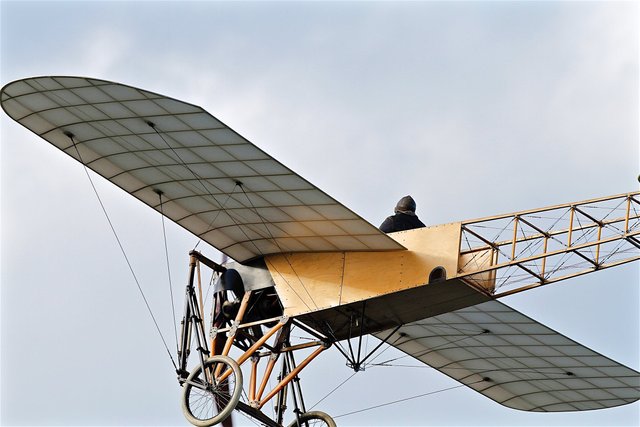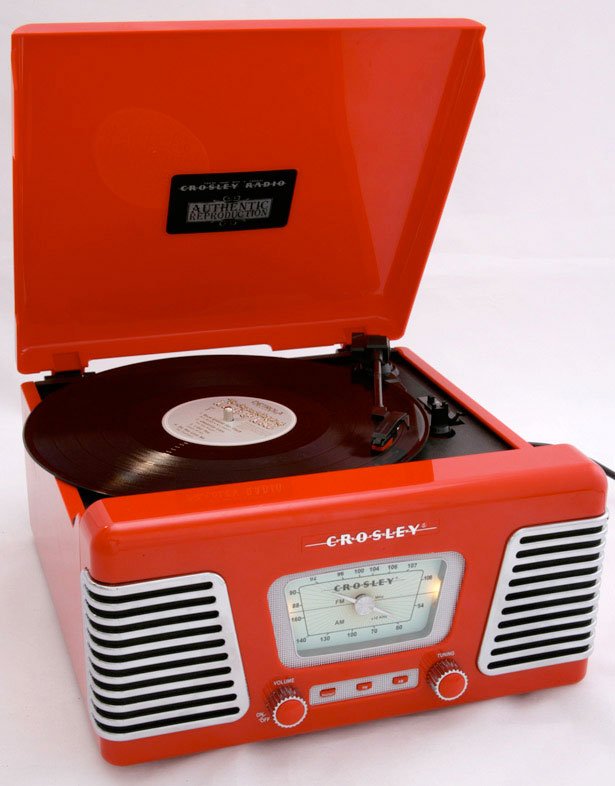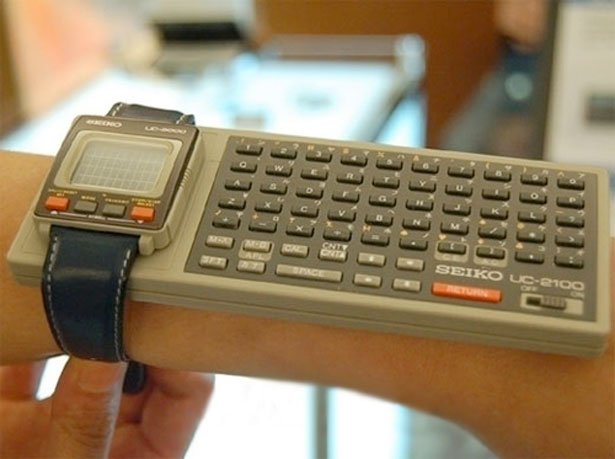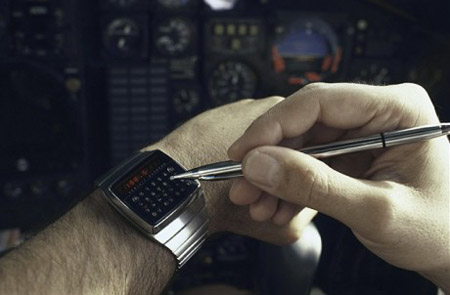ADSactly Tech News - A Walk Down Memory Lane, Forgotten Devices of the Past (Part 3)
Technology has advanced many times over and devices of the past often times have no place in the awareness of younger generations. It is my goal in this series to enlighten some and take others back to their youth with a bit of commentary on old gadgets! Imagine only being able to write a letter to a friend and having to wait for days for it to be received and days more for it to be responded to. Imagine being confined to live music alone and needing to hunt down musicians to get your fix! Many of the technologies I will discuss in this article played a vital role in inspiring similar devices we use today. The telegraph and turntable both transformed into the magical devices they have been replaced with. In many cases just a single device, a smartphone. Of course some devices are confined to the past as humanity has found other ways to accomplish the tasks they were originally designed for. Perhaps imagination is truly our greatest strength as a species. We are dreamers with an ability often times to manifest objects and devices that before were confined to wild minds. Who knows what the future holds and what we may invent going forward? Will we create a sort of Star Trek based utopia outlined in the movies and tv series or does the future hold something darker for us? Only time will tell... But enough of the rant eh? Let me unveil today's magnificent gadgets of the past! Few people still alive on this planet know anything at all about the mysterious gadget, a relic of the past known as 'the telegraph.' In fact, it was the great grandpa to telex and fax machines. Used by shipping operators and for military uses, the telegraph required a skilled operator to transmit and receive messages. But what was it exactly? Telegraphy (from Greek: τῆλε têle, "at a distance" and γράφειν gráphein, "to write") is the long-distance transmission of textual or symbolic (as opposed to verbal or audio) messages without the physical exchange of an object bearing the message. Thus semaphore is a method of telegraphy, whereas pigeon post is not. So if I'm getting this right, it means to write at a distance and to clarify further its to transmit communication over long distances... This aligns with my past knowledge of this gadget which if I remember correctly I had the opportunity to see in a museum in San Francisco when I was younger... But such an abstract concept must surely be explored further right? So how exactly did it work? Telegraphy requires that the method used for encoding the message be known to both sender and receiver. Many methods are designed according to the limits of the signalling medium used. The use of smoke signals, beacons, reflected light signals, and flag semaphore signals are early examples. Through the combination of the Telegraph machine and Morse Code human beings now had an instant way to transmit messages from one side of their country to another! Nowadays we just send a text message or an email but humour me if you will... Imagine being out of touch with your loved ones and suddenly a technology comes along and puts them right at your fingertips! No pigeons, no horseback delivery but an instant message carried through the wires to another operator, a wait and then a reply all in the same day! Magnificent right? An electrical telegraph was independently developed and patented in the United States in 1837 by Samuel Morse. His assistant, Alfred Vail, developed the Morse code signalling alphabet with Morse. The first telegram in the United States was sent by Morse on 11 January 1838, across two miles (3 km) of wire at Speedwell Ironworks near Morristown, New Jersey, although it was only later, in 1844, that he sent the message "WHAT HATH GOD WROUGHT" from the Capitol in Washington to the old Mt. Clare Depot in Baltimore. From then on, commercial telegraphy took off in America with lines linking all the major metropolitan centres on the East Coast within the next decade. The overland telegraph connected the west coast of the continent to the east coast by 24 October 1861, bringing an end to the Pony Express. After word got out, lines were put up all across the USA and the rest of the world followed their lead. One thing is for certain, without this device, the technological world as we know it would never have been the same! Now lets move onto another epic device of the past... For the DJs out there, I'm sure they'd certainly agree there's a big difference between a record player and a turntable! The phonograph gave rise to the turntable, a remarkable device capable of bringing the joy of music into households across the world! Most historians agree that with the introduction of the modern LP and the 7-inch 45-rpm disc, in 1948 and 1949, respectively, the modern turntable came into its own. Sales of record players got a further boost when mass production of stereo albums began in 1958. In the ‘60s and ‘70s, the affordability of turntables—both stand-alone and console varieties—made the device a fixture in most homes. Not even the emergence of cassette tapes could defeat the magnificent turntable as it remained as the centerpiece of the typical audio system. Record players are still in use in DJ booths, recording studios, and radio stations all over the world. A direct-drive turntable is one of the three main phonograph designs currently being produced. The other styles are the belt-drive turntable and the idler-wheel type. Each name is based upon the type of coupling used between the platter of the turntable and the motor. Direct-drive turntables are currently the most popular phonographs, due to their widespread use for turntablism in DJ culture.[1][2] Panasonic's Technics series were the first direct-drive turntables,[3][4] and remain the most popular series of turntables.[1][2] Its true that there was never a greater threat to the demand for turntables than the introduction of the compact disc and compact disc players in the 1980s. I'm happy to report however that turntables and LPs managed to come out ahead and be the proverbial phoenix rising from the ashes. While modern recording media has moved increasingly toward ease-of-use—often at the expense of fidelity—astute music lovers have turned to the tried-and-true, dropping a needle onto a vinyl platter and enjoying the distinctive sound only an LP can provide. Moreover, recording artists and club DJs have employed turntable technology in the service of their art albeit in a modernized and often digital manner. Now folks, I've saved the best for last! If you've never seen one of these things don't worry! I hadn't either which made it such a laugh to research and find out more about it... Have you ever seen something as cool as a wrist computer? Man oh man, how did I miss this! The potential for getting things done with a beauty like this was incredible! Dubbed as the smartphone of 1984: this took the idea of the “computer watch” to a whole new level... Think this is too much? Consider the nuclear watch, whose invention was discussed in an ancient Time magazine article. Be grateful and pleased it never happened folks... A newer model, the Ruputer was a wristwatch computer developed in 1998 by Seiko. In the US, it was later marketed as the onHand PC by Matsucom. The Ruputer has a 16-bit, 3.6 MHz processor and 2 MB of non-volatile storage memory and 128 KB of RAM. Its display is a 102×64 pixel monochrome LCD. Its main forms of input are a tiny 8-direction joystick and 6 function buttons. It also has a serial interface and an IR port for communicating with other devices. The main body of the device (separate from the strap) is roughly 2 inches wide, 1 1/8 inches across, and 5/8 of an inch deep. It is powered by two high-powered watch batteries, which supply the device enough energy for approximately 30 hours of use. Under normal conditions, the watch goes into standby mode down when not in use in order to extend its battery life. The device was distributed with a software development kit which allows for creation of new software written in the programming language C. If you think the gadgets are good now then just imagine how our ancestors felt when beauties like this hit the market! Some things never change, people are still using 'telegraph' type technology via email, text messages and mobile messaging services there's just not a need for morse code in these new and improved systems. DJ's are still spinning on turntables. Wrist calculators have been replaced by Apple and Samsung watches. As much as things change they manage to stay the same albeit in different forms and names. But experiences do you have with any of these devices? I want to know what my fellow @ADSactly society members think about these inventions... Here's a chance for the @ADSactly community to leave their thoughts and opinions on this topic! Thanks for reading. Authored by: @techblogger In-text citations sources: Telegraph - Wikipedia Turntables - Wikipedia Seiko Wrist Calculator - Wikipedia Image Sources: Wikipedia Pexels
Image Source: Pexels


Image Source: WebDesignerDepot






Click on the coin to join our Discord Chat

Witness proposal is here:
Go To Steem Witness Page
In the bottom of the page type: adsactly-witness and press vote.

Use small letters and no "@" sign. Or, click here to vote directly!
Thank you!

Oh man. I let my Pioneer Technics (Panasonic made them, the brand was Pioneer) Turntable go away with my entire Stereo system in '99. I gave it to a stepson. What a piece of gear that I owned for 25 years. I had the first pair of KLH Acoustic 1 speakers that Henry Koss shipped. Serial numbers 0006 and 0008. A Marantz Gold amplifier. The sound was stunning. I had a few digital LPs that were pressed in Japan. Ella Fitzgerald fronting Benny Goodman was the best of them.
My best buddy here went in the Navy in '66. His original rate was Signalman (Panty Waver), and he can still tap Morse Code at a pretty good rate. They had to be able to read and send it perfectly with sound, light and flags. Radio was thought to be 'not secure' so line of sight transmission was the key to fleet movement. He also learned to sew on a US Navy issued sewing machine to be able to maintain and make the 'battle flags' that flew from the mast. All based on Morse Code.
The wrist computer never made it to popular acceptance, so I never even saw one. It was an effort to mimic a popular cartoon of the time "Dick Tracy". He had a wrist radio in the 50s. Even Dick Tracy would be amazed today...
Up until 2008 Telegraph Operators were exempt from Jury Duty in Washington State. That'll tell you how important they were.
Another simply great post. Thank you!
Yes, I remember Pioneer! A very famous brand indeed. Sad to hear it slipped through your fingers but it sounds like it went to someone who would love it and use it even more. Morse code is fascinating, I learned about it in school but we had to use our voices to practice instead of the actual gear needed. The wrist computer didn't make it very far at all so I doubt most ever got a chance to see it, it was a real shocker to come across it! I remember Dick Tracy and his cool get-smart like gadgets! That is a really interesting fact about telegraph operators, who would of thought as recently as 2008 they were considered to be so important! Thanks @bigtom13.
As always: I enjoy this series and you make me get into a time machine, @. What things are, like you agreed with @velimir: he also brought us in his series of motorcycle photos an old air pump. Quite a relic.
Our ancestors were geniuses! Of the three devices today, I could only see the sound system. I'd heard the other two mentioned, but I hadn't seen them. I remember when I was a little girl at home there was a sound system and lots of acetate records. The experience of taking the needle to the groove or music I wanted to listen to and changing it from side A to side B was an experience I remember clearly. They had to treat them delicately because they scratched each other. The same thing happened with the cassettes that sometimes got stuck in the device and we had to carefully remove the tape so as not to break it. People were left in the middle of the dance floor without being able to dance! Hahahaha. I enjoyed your post. Thanks for sharing.
Yes the old flip the record to the other side and set the needle routine! Horrible when a record gets scratched but they can't be expected to last forever either. Thanks for your thoughts @nancybriti.
Have to remember that these watches were not primarily to use your fingers on, they were designed for people using a pencil to write math equations. Logically you'd just pull up your opposing wrist with the calculator and punch the equations in with your writing hands' pencil.

Really, really, Technology has advanced and this is as a result of science, research and wisdom, today we no longer have to wait for days or months to either send a massage or receive one.
But i loved that of the use of smoke and flags to code and decode massages sent or being received. Today we are enjoying technological advancements in all ramifications making life easy for human being as we as making work rate commendable.
@adsactly i enjoyed reading this, please permit me to use this as a reference post to teach others about history in my community.
You certainly have my permission as the author to use it for the purpose stated. I'm happy you enjoyed it!
It's funny enough that I didn't meet since devices and it pains me that I wasn't able to use them. Now the world is changing for good with great technologies as day passes by. I'm very sure that does forgotten devices of the part have a high rate of disadvantages to be compared with the trending devices now.
Yes,,Sir@adsactly,,I am totally appreciate your opinion..In terms many era evaluate technology development day by day..
This technology makes people life easier and comfortable..This technology engineering also contribute this process..
I think no dout you are a creative person..
and your post is lot of better..so,,many many like this post..
Great post
@techblogger, Yes, there are many Tools and Technologies of past which are currently standing on the forgettable phase. But for sure we cannot forget the contribution which played by these tools and technologies.
And most importantly we have to understand one aspect and that is, we are living in the State of Evolution and for sure one technology will going to defeat other and in that way the process of evolution will be continued.
Wishing you and @adsactly team an great day and stay blessed. 🙂